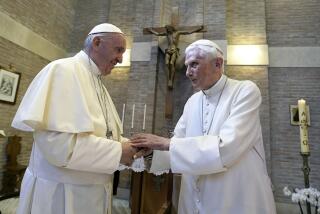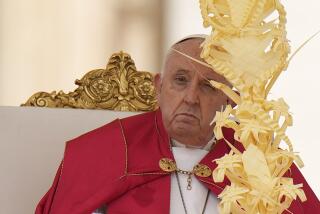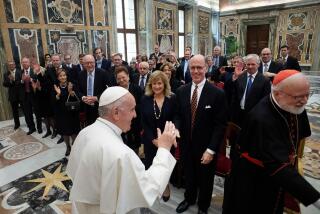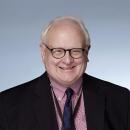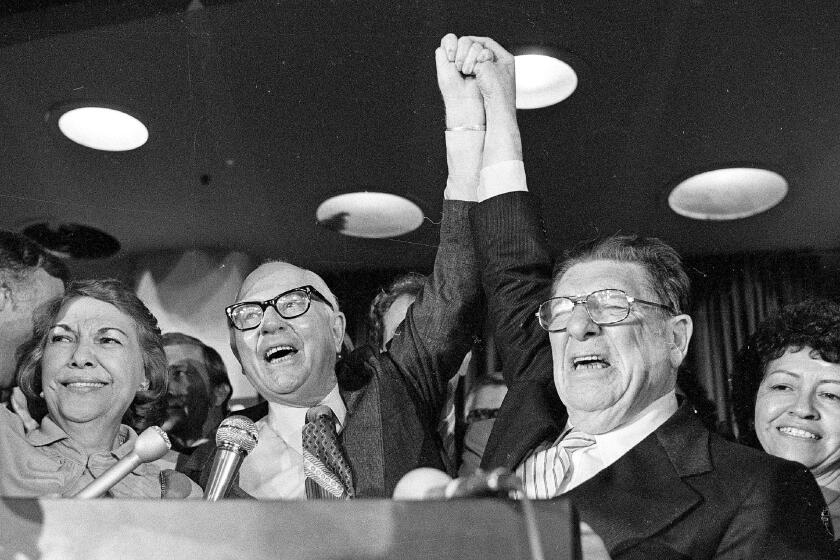Opinion: Pope Francis disappoints fans of Latin Mass
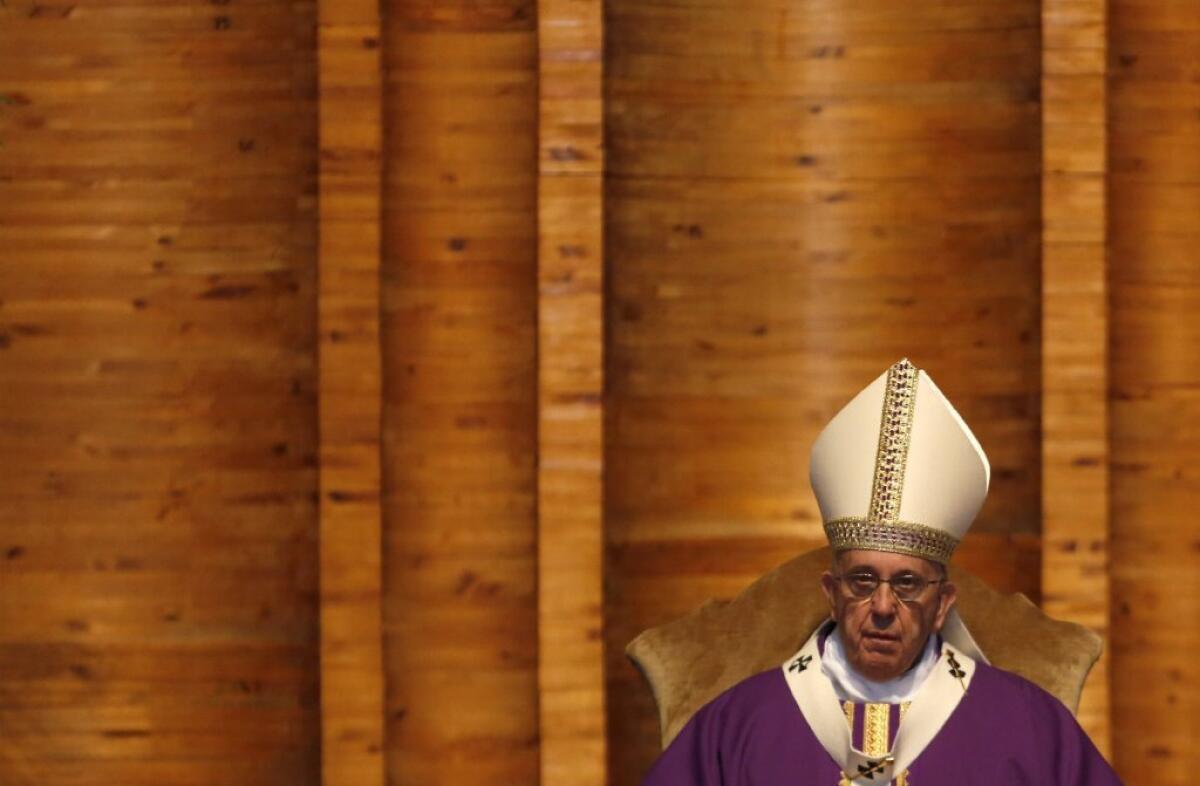
- Share via
The perception that Pope Francis is more “liberal” than Pope Benedict XVI has been shaped mostly by his seemingly softer approach to hot-button issues such as homosexuality -- “Who am I to judge?” -- and his humble personal style. But not much attention has been paid to an issue that is a sore subject for a subset of Catholic traditionalists: the pope’s views about public worship.
It’s well known that Francis disdains the Baroque vestments and sky-high miters that Benedict brought back into use, but the pope’s liturgical differences with his predecessor extend beyond matters of dress.
Benedict famously made it easier for priests around the world to celebrate the “extraordinary form” of the Mass -- that is, the Latin liturgy celebrated throughout the Catholic world before the changes set in motion by the Second Vatican Council. Francis long has been viewed with suspicion by devotees of the old Mass -- and for good reason.
Take the comments attributed to him by Archbishop Jan Graubner of the Czech Republic. According to Graubner, Francis described affection for the old Latin Mass as a “fashion.”
“It is just necessary to show some patience and kindness to people who are addicted to a certain fashion,” the pope reportedly said. “But I consider greatly important to go deep into things, because if we do not go deep, no liturgical form, this or that one, can save us.”
Last week, Francis seemed to double down on his dismissal of Latin Mass traditionalists. On March 7, he celebrated Mass at the Roman church where Pope Paul VI exactly 50 years before had celebrated Mass in Italian for the first time.
On leaving the church, according to the Catholic News Service, Francis said: “Let us give thanks to the Lord for what he has done in his church in these 50 years of liturgical reform. It was really a courageous move by the church to get closer to the people of God so that they could understand well what it does, and this is important for us: to follow Mass like this.”
For many Catholic traditionalists -- not all of them elderly -- these were shocking words. It’s not just that they find the old Latin Mass more aesthetically edifying than vernacular versions. The old Mass is a proxy for a cluster of theological precepts that have been eroded since Vatican II, notably the ideas that the Mass is primarily a repetition of Christ’s death on the cross (rather than a communal meal) and that the Mass is primarily the action of the priest rather than of the congregation.
The Roman Catholic Church is now experiencing the sort of polarization in public worship that long has been common in Anglican churches, in which some “high church” parishes feature elaborate ceremony while “low church” congregations favor a stripped-down, simpler rite.
Separate vocabularies also have grown up: Traditionalist Catholics will say that a priest “offers Mass”; liberal Catholics call the priest the “presider” at what they are more likely to call the “Eucharist.” The implication of the latter terminology is that the priest is the chairman of an essentially corporate act of worship. (Traditionalist Catholics see this as creeping Protestantism.)
Pope Benedict, who grew up in the Baroque Catholicism of Bavaria, left little doubt about which side he was on. Francis, although he embraces some aspects of pre-Vatican II Catholicism (such as veneration of the Virgin Mary), is pretty clearly a modernizer when it comes to liturgical reform. No wonder some traditionalist Catholics still consider Benedict the real pope.
Follow Michael McGough on Twitter @MichaelMcGough3
More to Read
A cure for the common opinion
Get thought-provoking perspectives with our weekly newsletter.
You may occasionally receive promotional content from the Los Angeles Times.
